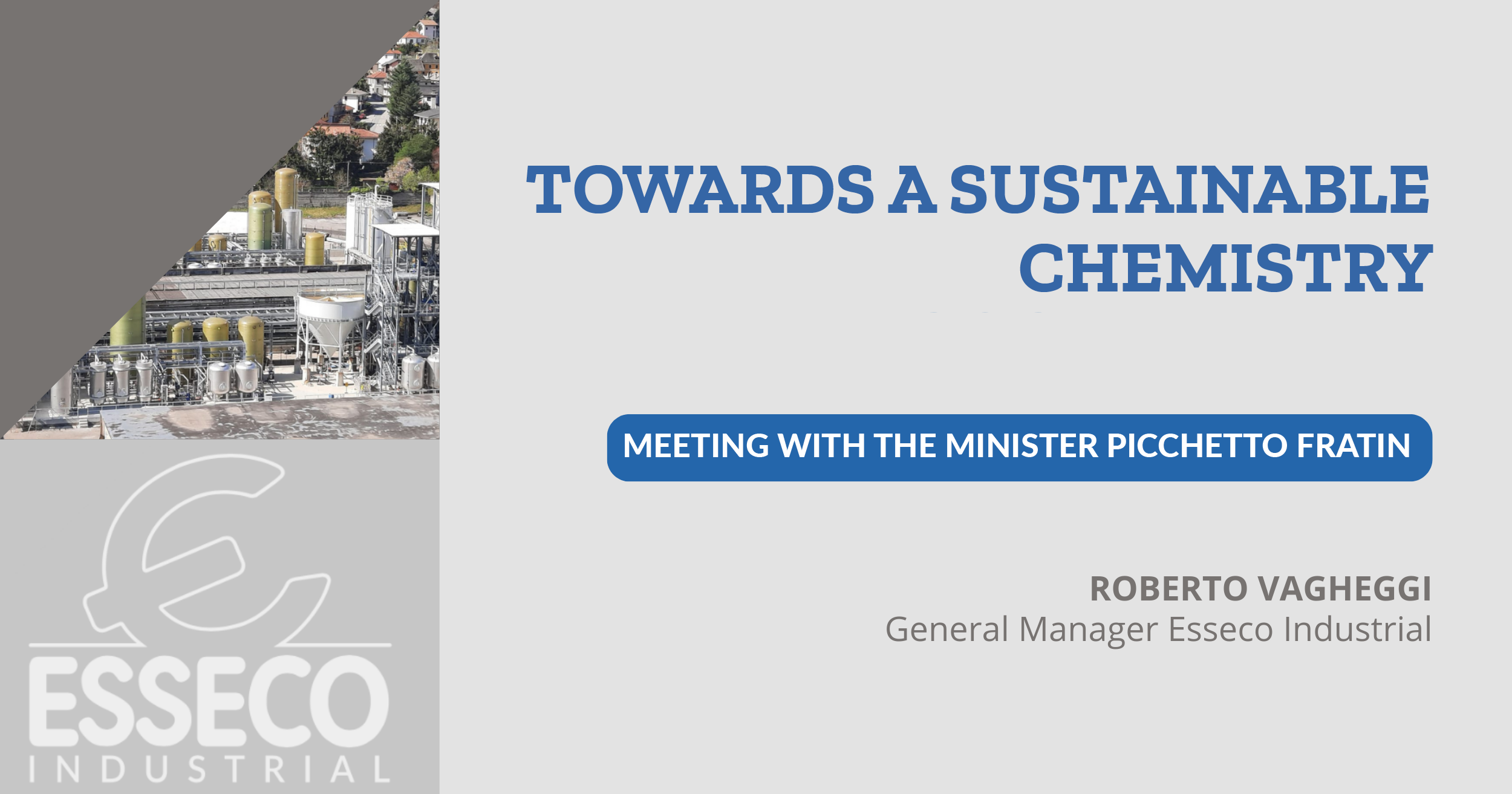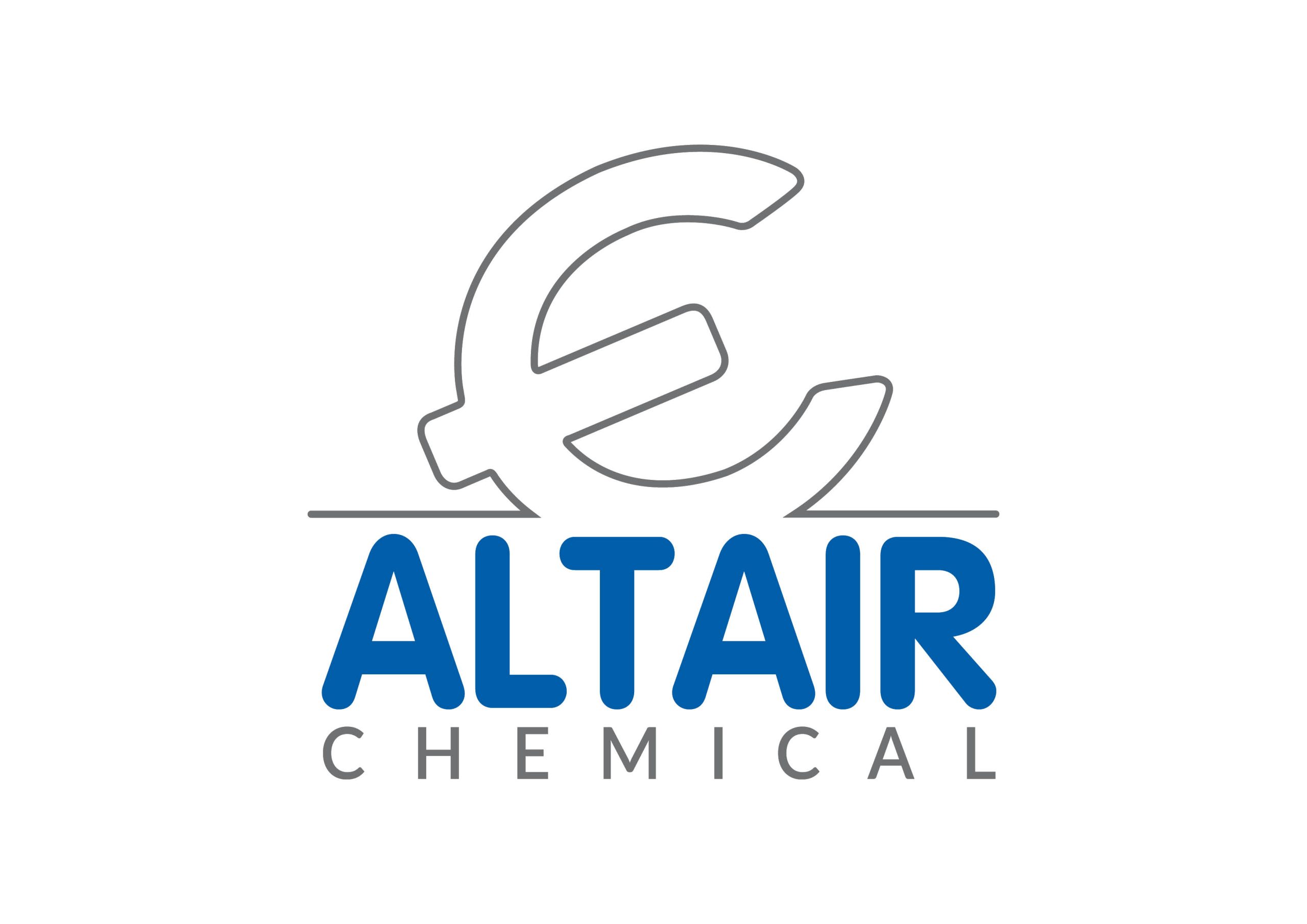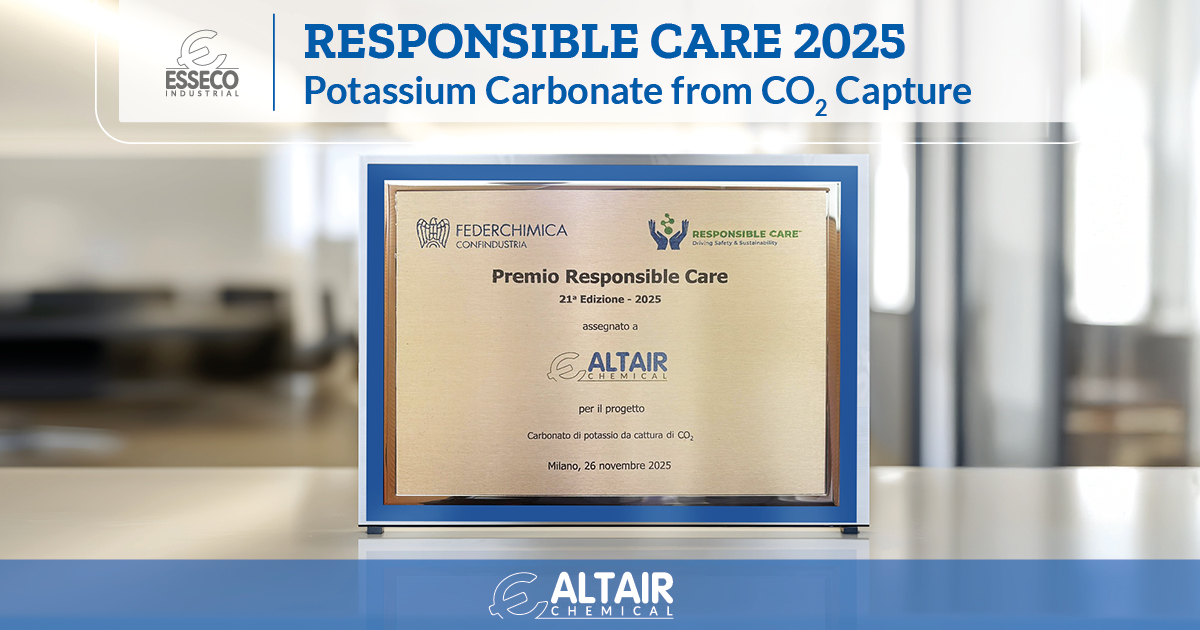At its IV Quarterly Meeting 2025, Esseco Industrial took stock of a challenging year for…

From a crisis committee at the Ministry of Economic Development to its entry in Esseco Industrial, from the Reborn project for the relaunch of the production site to the next large investments that project the Pieve Vergonte plant in the future. The recent history of Hydrochem Italia was the focus on Friday, November 17, at the Public Assembly “Sustainable Development of the Territory: Actions and Projects” organized by the Industrial Union VCO at the “Il Maggiore” events center in Verbania, Piedmont.
The event provided a moment of dialogue between institutions and local businesses about the environment, energy, and sustainability, on initiative of the local Confindustria with guest speaker the Minister of Environment and Energy Security, Gilberto Pichetto Fratin.
Roberto Vagheggi, General Manager of Esseco Industrial and CEO of the Chlor-Alkali division, outlined the work of innovation and relaunch carried out over the years, despite challenges linked to the pandemic.
REBORN PROJECT
The revival of the Pieve Vergonte site began with its acquisition from the crisis committee in 2019 by Esseco Industrial. The production site, left in a state of abandonment by previous owners, saw investments exceeding 50 million euros, already made, that increased the company’s turnover from 30 to 100 million euros in 2022 with an employment of 87 employees.
The site thus became part of Esseco Industrial: a division of Esseco Group with over 770 employees and 2,500 clients worldwide, present in 10 countries with 8 production sites covering 620,000 m², 80% of which is on Italian soil. Thanks to the 740,000 tonnes produced, the turnover reached approximately 700 million euros, effectively doubling over the last five years.
In a highly energy-intensive sector, Esseco Industrial manages to self-produce 65% of the electricity used, with 55% of CO2-free energy and 50% of energy from renewable sources[1]. The energy transition is the pride of Hydrochem Italia where, thanks to the two hydroelectric plants of Ceppo Morelli (10.8 MW) and Megolo (6.6 MW), it manages to cover 75% of self-produced energy from renewable sources at its own plant: of 88,300 MWh, nearly 58,000 MWh are self-produced, practically as if the consumption of about 25,000 families[2] were entirely green energy.
The Reborn project was thus a successful bet that led to the functioning and optimization of a site capable of contributing to a renewable and more sustainable energy transition for the entire chemical sector.
WATER CONSERVATION
The relaunch project was implemented with great attention to preserving the productive inputs for a sustainable system compliant with environmental regulations. It transitioned from “mercury” electrolysis technology—outdated, polluting, and non-compliant to the point of halting production—to “membrane” technology, historically making Esseco Industrial among the pioneers in Europe and the world, even before the mandatory community regulations.
At the same time, to reduce water consumption due to the new environmentally friendly technology, we have installed evaporative towers capable of dissipating heat and cooling the water, reducing total consumption by 10% and avoiding the extraction of about 600m³/h of water from wells.
GREEN TRANSPORT
The sustainable approach also involved transport. An internal railway network for product transportation was already present at the Pieve Vergonte plant. Through an investment of over 2 million euros, the railway system was upgraded and reactivated to allow trade and transport of materials throughout Europe with a reduced environmental impact. To date, 1,800 truckloads have been eliminated, and work is underway for an even more ambitious 2024.
The aim is to save over 65 tonnes of CO2 by sending 10 liquid chlorine trains and 12 soda-potash trains to Switzerland and to make the best use of the intermodality of the HUPAC terminal in Busto Arsizio, just 90 kilometers away for sending products to Northern Europe, with an estimate of 1,000 isotanks and a saving reaching nearly 500 tonnes of CO2 a year. Finally, a feasibility study has been initiated for the use of electric trucks to cover the distance between the Hydrochem Italia headquarters in Pieve Vergonte and that of Esseco in Trecate (about 120km).
DECARBONIZATION OF THERMAL PRODUCTION
The Pieve Vergonte site is also a facility that produces hydrogen (via the previously mentioned electrolysis process), used within the plant instead of methane gas. If so far the commitment has been maximum to proceed with the decarbonization of the electric production, now the great challenge is that of recovering heat: a decarbonization of the thermal production.
By October 2024, a modification of the current distillation columns of Chloro-aromatics is planned, through which it will be possible to recover heat thanks to a pressurization circuit and a graphite condenser. Through this process, an 8% savings in the company’s methane consumption is expected, equivalent to 1,570 annual tonnes of CO2 less: about the same as 750 gasoline cars[3].
IDROHYDRO PROJECT
However, the investments have not ended. In the near future, the Idrohydro project, which involves the construction of a hydroelectric plant at Pestarena, was presented at the PNRR “Hard-to-abate” call, by the Ministry of Environment and Energy Security. This plant will not produce energy for our plants but will instead be used for the production of additional hydrogen aimed at further decarbonizing our production sites (1.2 million smc of methane less avoiding the emission of 2,468 tonnes of CO2) and, if possible, even the entire surrounding area. A project that, therefore, aims not only at the sustainability of our systems but turns to the entire energy needs of the surrounding community.
INDUSTRIAL DEVELOPMENT CONTRACT
To Idrohydro project are added the ambitious scientific research and corporate development projects linked to the Industrial Development Contract presented to Invitalia-Ministry of Enterprises and Made in Italy.
With an additional investment of 50 million euros, energy recovery in the synthesis of hydrochloric acid, the production of epichlorohydrin from the by-products of the biodiesel industry, and the recovery of energy and material in the production process of chloro-aromatics are foreseen. Investments that will allow an employment increase of 20 units in the next three years.
“We are proud of our choices and the projects we have presented and that we want to carry forward, just as we are proud to have brought back to activity an ancient plant, but completely modernized and, today, projected into the future. Goals that we can only achieve with the support of the local community and the Institutions, which will have a crucial role in the authorization process that will be decisive to make these investments concrete and timely,” concluded Roberto Vagheggi, General Manager of Esseco Industrial and CEO of the Chlor-Alkali division.
[1] Data includes 35% from renewable network sources, average source last 5 years Ispra 2018-2022.
[2] Source Arera calculating 2.7 MWh per year per household composed of 3-4 people.
[3] Source European Commission’s Joint Research Centre JRC, average CO2 emissions last 5 years WLTP (World Harmonized Light Vehicle Testing Procedure) calculation on 20,000 km per year per car.


